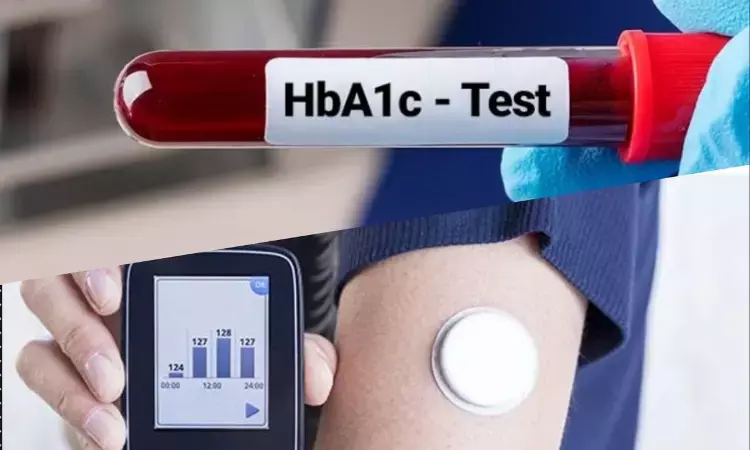- Home
- Medical news & Guidelines
- Anesthesiology
- Cardiology and CTVS
- Critical Care
- Dentistry
- Dermatology
- Diabetes and Endocrinology
- ENT
- Gastroenterology
- Medicine
- Nephrology
- Neurology
- Obstretics-Gynaecology
- Oncology
- Ophthalmology
- Orthopaedics
- Pediatrics-Neonatology
- Psychiatry
- Pulmonology
- Radiology
- Surgery
- Urology
- Laboratory Medicine
- Diet
- Nursing
- Paramedical
- Physiotherapy
- Health news
- Fact Check
- Bone Health Fact Check
- Brain Health Fact Check
- Cancer Related Fact Check
- Child Care Fact Check
- Dental and oral health fact check
- Diabetes and metabolic health fact check
- Diet and Nutrition Fact Check
- Eye and ENT Care Fact Check
- Fitness fact check
- Gut health fact check
- Heart health fact check
- Kidney health fact check
- Medical education fact check
- Men's health fact check
- Respiratory fact check
- Skin and hair care fact check
- Vaccine and Immunization fact check
- Women's health fact check
- AYUSH
- State News
- Andaman and Nicobar Islands
- Andhra Pradesh
- Arunachal Pradesh
- Assam
- Bihar
- Chandigarh
- Chattisgarh
- Dadra and Nagar Haveli
- Daman and Diu
- Delhi
- Goa
- Gujarat
- Haryana
- Himachal Pradesh
- Jammu & Kashmir
- Jharkhand
- Karnataka
- Kerala
- Ladakh
- Lakshadweep
- Madhya Pradesh
- Maharashtra
- Manipur
- Meghalaya
- Mizoram
- Nagaland
- Odisha
- Puducherry
- Punjab
- Rajasthan
- Sikkim
- Tamil Nadu
- Telangana
- Tripura
- Uttar Pradesh
- Uttrakhand
- West Bengal
- Medical Education
- Industry
Study Finds discordance between laboratory and CGM-estimated HbA1c

Hemoglobin A1C (HbA1c) is used as an index of average blood glucose measurement over a period of months and is a mainstay of blood glucose monitoring. However, in a recent study, researchers confirmed a discordance between laboratory and estimated (using the glucose management indicator [GMI]) glycated hemoglobin (HbA1c) from continuous glucose monitoring (CGM). The research has been published in Diabetes Technology & Therapeutics on March 22, 2021.
HbA1c metric is easy to measure and relatively inexpensive to obtain, and it predicts diabetes-related microvascular complications. However, HbA1c provides only an approximate measure of glucose control; it does not address short-term glycemic variability (GV) or hypoglycemic events. Continuous glucose monitoring (CGM) is a tool that helps clinicians and people with diabetes to overcome the limitations of HbA1c in diabetes management. Previous studies have shown a marked discordance between laboratory and estimated HbA1c (eA1C). This may cause errors in diabetes management. Jordan E. Perlman and his team conducted a study to further evaluate discordance between laboratory and CGM-estimated HbA1c (eA1C).
It was a retrospective review of patients with diabetes who use CGM. The researchers used the electronic medical record of the University of Washington to extract eligible encounters. They included a total of 641 separate office encounters of patients who use CGM and had HbA1c and sensor data fewer than 4 weeks apart. They calculated HbA1c-GMI discordance for each subject and assessed for any impact of comorbidities. They determined HbA1c-GMI discordance as the absolute difference between laboratory and eA1C.
Key findings of the study were:
- Among 641 encounters, the researchers identified that 91% had had type 1 diabetes and noted that most patients had diabetes for greater than 20 years.
- They observed that the mean duration of CGM wear was 24.5 ± 8 days.
- They found that only 11% of patients had HbA1c-GMI discordance <0.1%, but 50% and 22% had differences ≥0.5% and ≥1%.
- They noted that the incidence of discordance increased in patients with advanced chronic kidney disease (estimated glomerular filtration rate <60).
The authors concluded, "We found substantial discordance between laboratory and eA1C in a real-world setting. Clinicians need be aware that HbA1c may not as accurately reflect mean glucose as previously appreciated."
For further information:
Medical Dialogues Bureau consists of a team of passionate medical/scientific writers, led by doctors and healthcare researchers. Our team efforts to bring you updated and timely news about the important happenings of the medical and healthcare sector. Our editorial team can be reached at editorial@medicaldialogues.in.
Dr Kamal Kant Kohli-MBBS, DTCD- a chest specialist with more than 30 years of practice and a flair for writing clinical articles, Dr Kamal Kant Kohli joined Medical Dialogues as a Chief Editor of Medical News. Besides writing articles, as an editor, he proofreads and verifies all the medical content published on Medical Dialogues including those coming from journals, studies,medical conferences,guidelines etc. Email: drkohli@medicaldialogues.in. Contact no. 011-43720751


